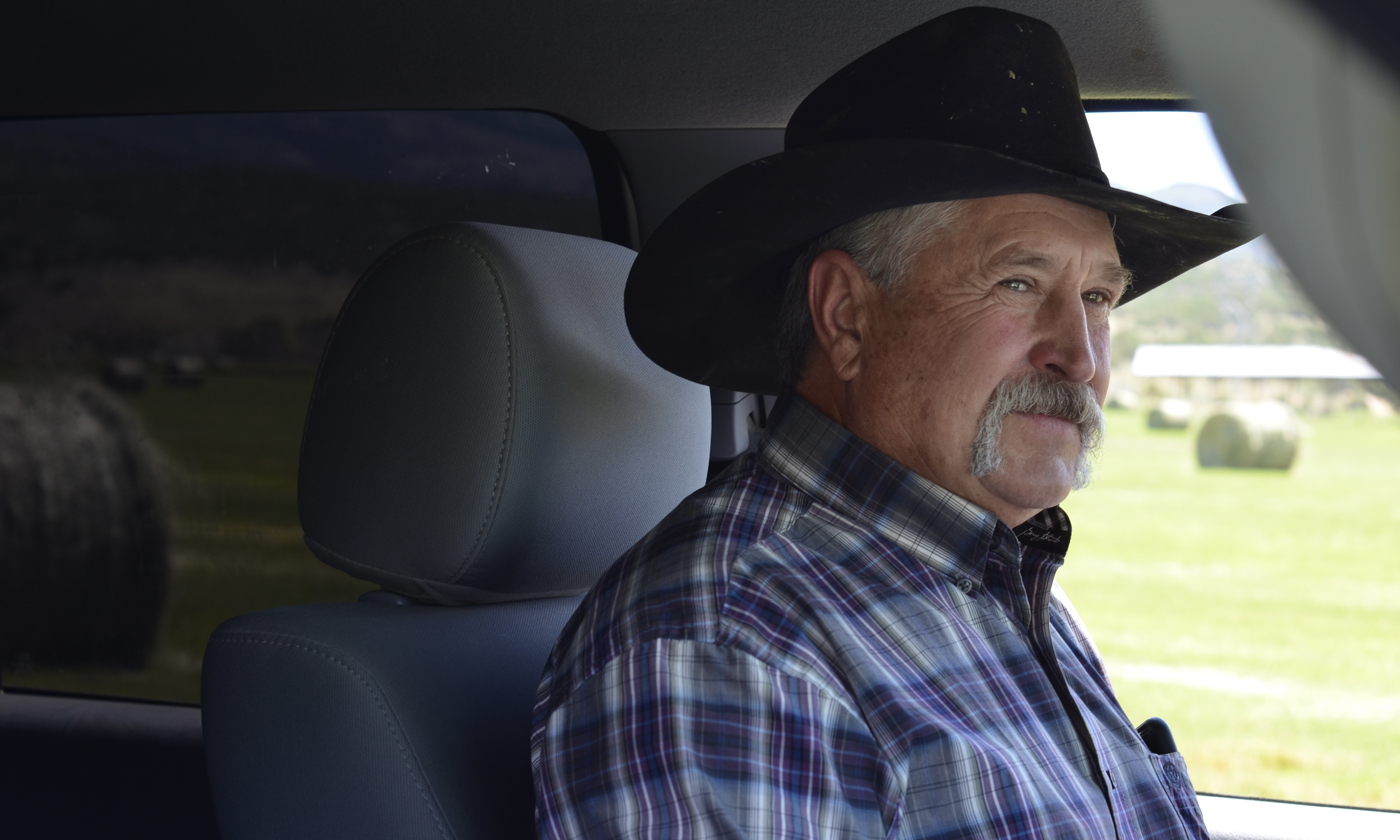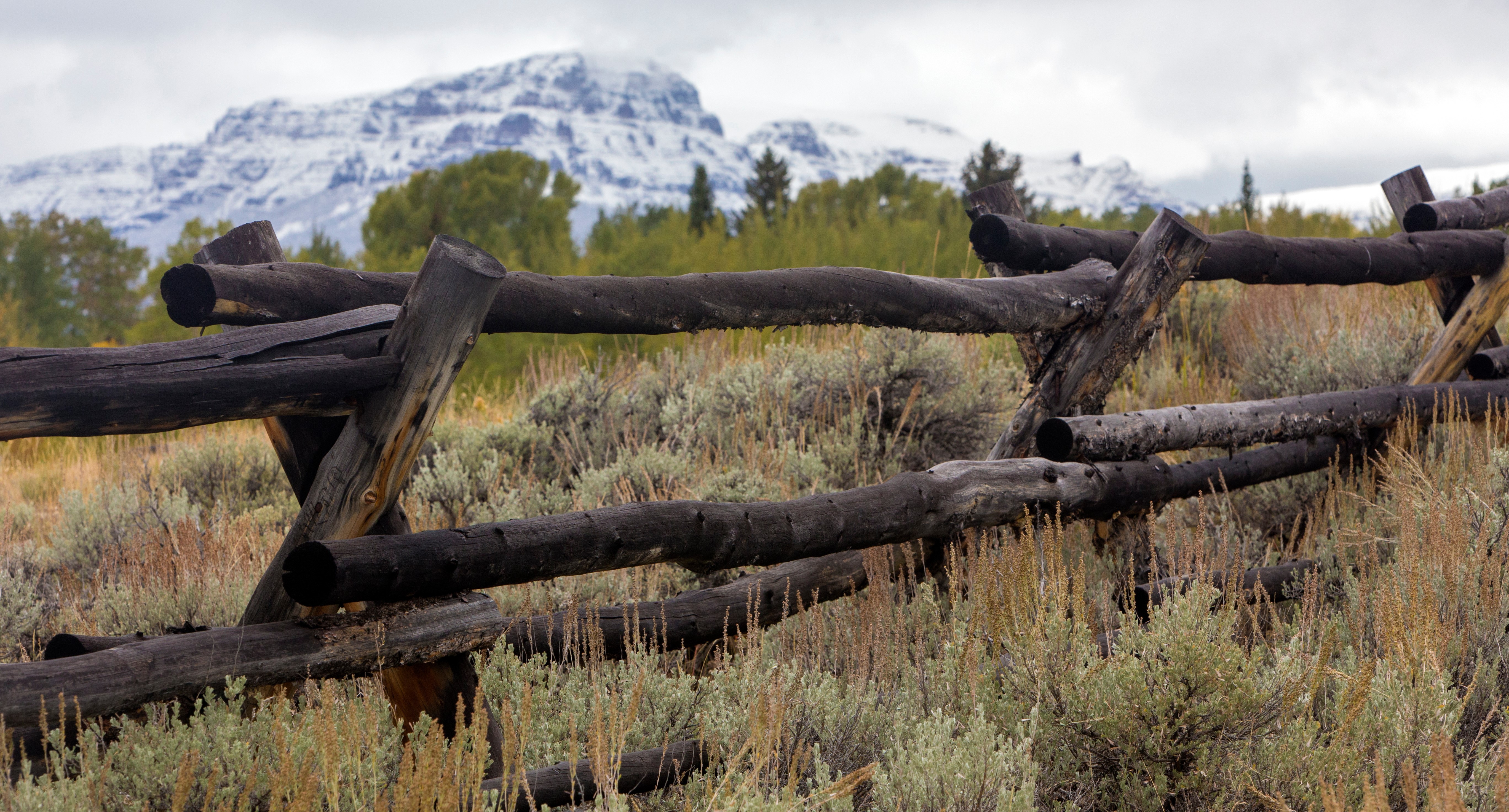
Mark Roeber
Those who have had the opportunity to marvel at the foot of the geographic feat truly understand the beauty of the West Elk Mountain range in Colorado. Winding trails give way to gorgeous views of western Colorado and cold creeks run clear all summer long. Yet, many who travel to the hot tourist destination stop at the obvious aesthetic, missing the beauty of the intertwined partnership among livestock, wildlife, and grass that maintains the landscape. One man knows the symbiotic relationship well. Mark Roeber runs the Mt. Lamborn Ranch, the namesake of the 11,402-foot mountain where he operates. Mark’s great-grandfather, Theodore Roeber, settled the ranch in 1889, making Mark the fourth generation to run the cow/calf operation. Mark’s ranch includes Bureau of Land Management (BLM) and Forest Service allotments, meaning he leases land from the federal government. He is not alone. Many ranchers in the West also work with federal agencies to raise and cattle and sheep on public lands. It is a valued partnership that ensures ecosystems thrive.
The Birth of a Symbiotic Partnership
The Taylor Grazing Act was signed into law in 1934 and provided a formalized structure for a lasting relationship between the American tourist trekking into the wilderness and ranchers who utilize that land. Today, the 162 million acres of public land provides countless values and opportunities for many different kinds of users.
More than 22,000 public lands ranchers work alongside the federal government to raise cattle and sheep on these public lands. Grazing ensures the government can best manage these open spaces. For example, grazing helps preserve and enhance habitat for many wildlife species by maintaining appropriate forage distribution and also removes fine fuel loads that are primary fuel in catastrophic wildfires.
“We don’t always recognize the total value ranching brings,” said Roeber. “Fire mitigation through concentrated grazing ensures communities are safe from both the blaze and an economic downturn. Tourism dollars that come along with activities such as hunting or camping on public lands could be gone with one spark. Clearing that fire fuel and targeting at-risk areas is our goal every year.”
Carbon sequestration is also a valuable return from livestock grazing. On grazing lands, soil works as a carbon sink by absorbing and holding atmospheric carbon. For public and private lands alike, grazing is a vital part of this natural carbon cycle. Cattle grazing helps promote regeneration of native grasses, optimizing the carbon sequestration potential of these pastures. Cattle also deposit organic matter as they graze, which improves soil health over time. Overall, ruminants, like cattle that graze on these lands, increase the carbon storage capability of our rangeland and natural grasses.
Ranching: More than just being a cowboy.
Public lands provide for more than just ranchers. Through various laws, Congress provided for federal agencies like the Bureau of Land Management and the U.S. Forest Service to manage vast acres across the West. In the establishment of these agencies, Congress provided that these lands would be available to all Americans, a concept known as multiple use. This means that the lands would not be managed for a single purpose, and instead provides that the land be open and managed for the benefit of many uses, like ranching, recreation, , hunting, and fishing.
While federal agencies manage the lands, local counties provide services such as law enforcement, search and rescue, and fire mitigators. Mark knows this well, as he has served for eight years as County Commissioner in one of the most sought-after public recreational areas in Colorado.
“Maintaining landscapes for recreation is difficult, and the footprint left by tourists is anything but invisible,” said Mark. “Ranchers help balance out the scales – maintain infrastructure like roads, bridges, and water wells. These lands are precious to us.”
Dollars and Cents: The Business Case for Ranching
Ranching is often the backbone of many of the rural communities that tourists love. While visits from hikers and campers provide valuable income to these often-remote areas, the benefits are often transient and come and go just as the leaves change color and fall. In many cases, livestock producers provide a key economic foundation in these rural areas that would otherwise have limited economic activity. Rural communities cannot rely on recreation or tourism alone. “While seasonal public lands recreation is beneficial to many of these small communities, its benefits are just that: seasonal. Public lands ranching offers economic stability to fill the gap. Whether you’re talking about equipment purchased at a local dealer or a gate-to-plate operation, ranching offers sustainable economic benefits year-round. They are the life-blood of small communities.”
One example of the economic output that ranching provides can be seen in Homestead Meats, a North Fork Valley USDA inspected processing plant for beef, lamb, and pork. Mark owns a share of the business, which processes and sells protein raised by six local ranches in the region. The business brings just under 20 jobs to the region and is a key link in the local supply chain year-round.
Along with the economic support to the community, ranching also provides a benefit to the other industries that small communities rely on. For example, tourism relies heavily on the beauty of lush, green mountains and a plethora of game for hunters. Local restaurants and bars rely on consistent income from members of the community, and the added benefits of expanded sales during peak tourist season. Even more, ranchers and industry professionals comprise the patient population for rural health systems. While the link may not be obvious to those who do not live in these rural communities, Mark understands the intrinsic link between the two.
